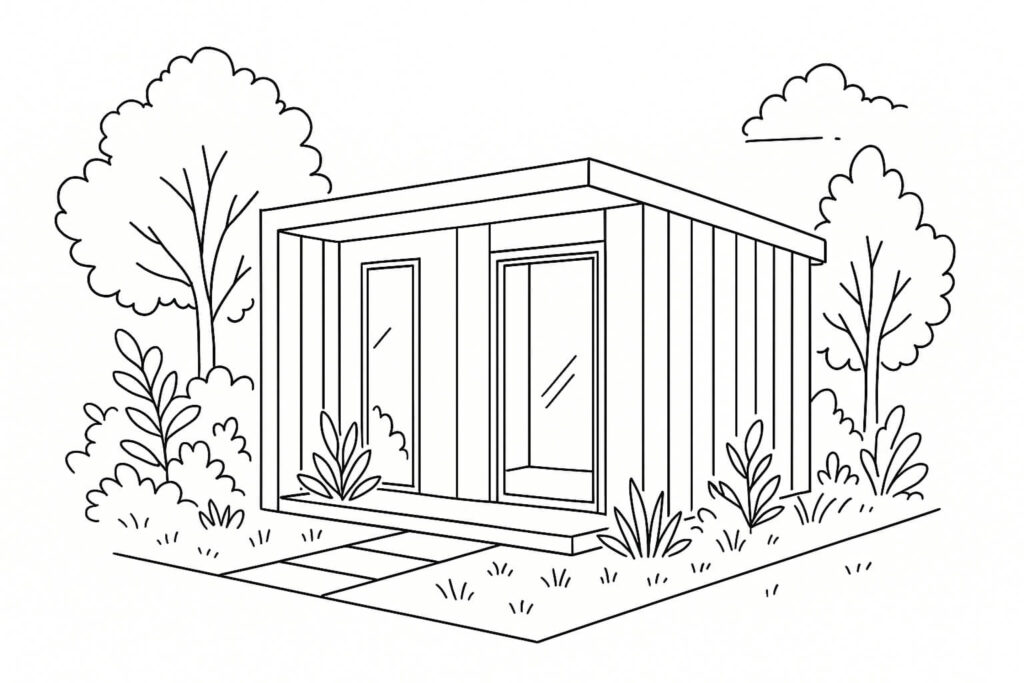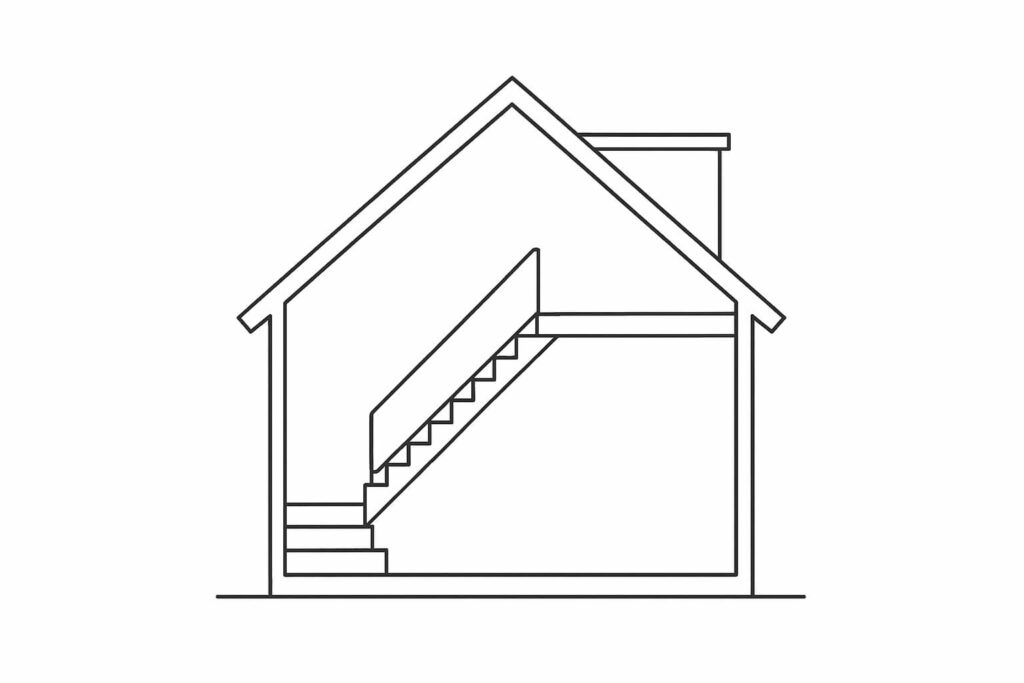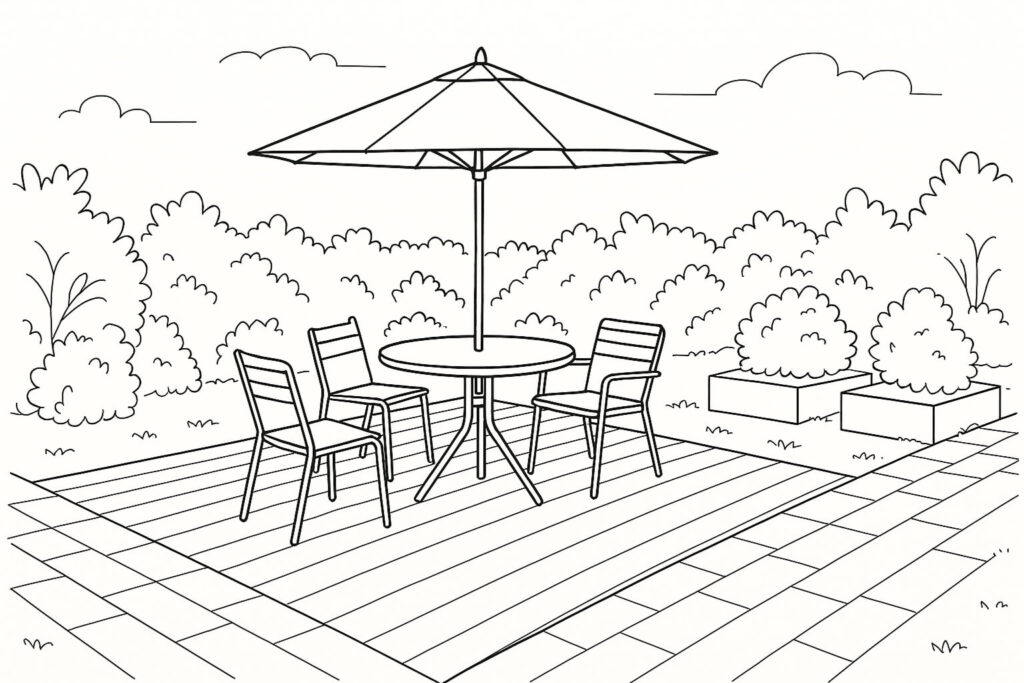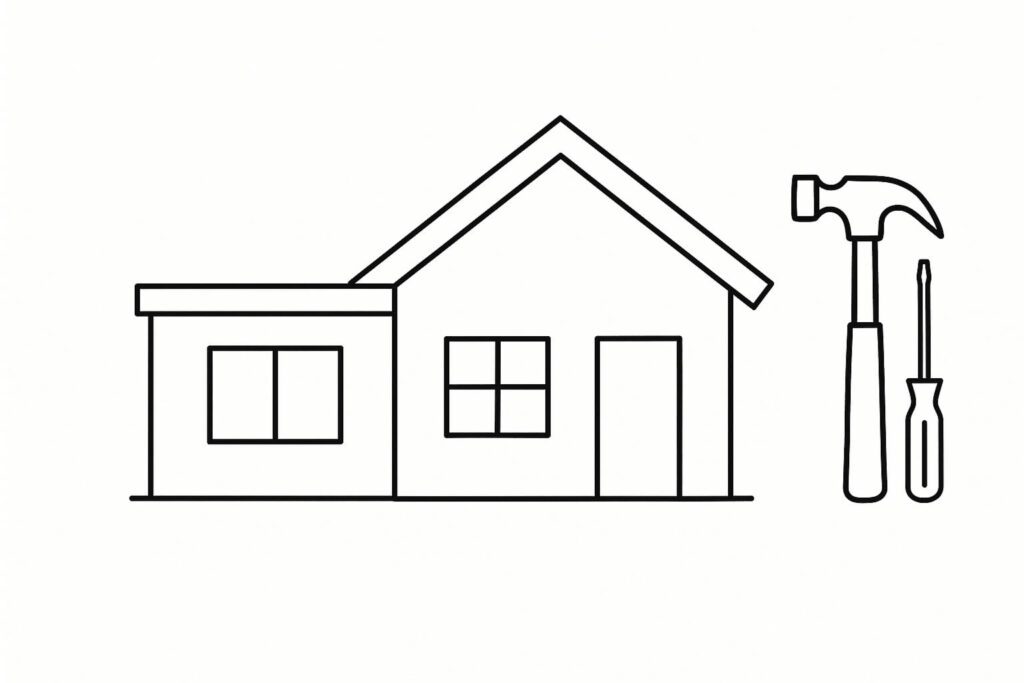Creating the Perfect Garden Room: Your Ultimate Guide to Outdoor Living Spaces
Permalink: /garden-room-design-guide/
The concept of garden rooms has revolutionised how Cambridge homeowners think about utilising their outdoor space. No longer are gardens simply areas for planting and relaxation; they’ve become extensions of our homes, offering opportunities to create dedicated spaces for work, exercise, hobbies, and entertainment. Whether you’re dreaming of a tranquil home office surrounded by nature, a fully-equipped gym where you can exercise in privacy, or an artist’s studio flooded with natural light, a well-designed garden room can transform both your lifestyle and your property’s value.
The appeal of garden rooms has grown exponentially in recent years, particularly as more people embrace flexible working arrangements and seek to maximise the potential of their homes. Unlike traditional house extensions, garden rooms offer the unique advantage of creating completely separate spaces that feel distinct from the main house whilst remaining easily accessible. This separation proves invaluable for maintaining work-life balance, pursuing hobbies without disturbing family members, or simply creating a peaceful retreat where you can escape the demands of daily life.
For Cambridge homeowners, garden rooms represent an particularly attractive option given the city’s abundance of mature gardens and the premium placed on outdoor space. The ability to create additional functional accommodation without extending the main house appeals to those who value their garden space whilst recognising the need for more versatile living areas.
The Versatility of Modern Garden Room Design
Contemporary garden room design has evolved far beyond the basic garden shed or summer house. Today’s garden rooms are sophisticated structures that can accommodate virtually any function you might require, from professional office spaces to entertainment areas, fitness studios to creative workshops. This versatility stems from advances in construction techniques, insulation technology, and building materials that allow garden rooms to be used comfortably throughout the year.
Home Office Garden Rooms have become increasingly popular as remote working has shifted from occasional necessity to permanent lifestyle choice for many professionals. A dedicated garden office provides the psychological separation between work and home life that many people struggle to achieve when working from spare bedrooms or kitchen tables. The natural light and garden views that characterise well-designed garden offices can significantly improve productivity and wellbeing, whilst the physical separation from household distractions creates an environment conducive to focused work.
When designing a garden office, consider factors such as internet connectivity, electrical requirements for computers and equipment, heating and cooling systems for year-round comfort, and adequate storage for files and office supplies. The positioning of windows becomes crucial, maximising natural light whilst avoiding glare on computer screens and maintaining privacy from neighbouring properties.
Fitness and Wellness Studios represent another popular application for garden rooms, offering the privacy and convenience that many people prefer for exercise routines. A garden gym eliminates the need for expensive gym memberships whilst providing a dedicated space for fitness equipment that doesn’t intrude on living areas. The connection to the garden creates an inspiring environment for exercise, whilst the separation from the main house means that early morning or late evening workouts won’t disturb family members.
Creative Studios and Workshops benefit enormously from the natural light and peaceful environment that garden rooms provide. Whether you’re a painter requiring north-facing light, a musician needing sound isolation, or a craftsperson requiring space for messy projects, a purpose-built garden room can accommodate your specific requirements whilst keeping creative activities separate from daily family life.
Entertainment and Leisure Spaces transform gardens into year-round social hubs, providing comfortable spaces for entertaining guests regardless of weather conditions. These might include games rooms, home cinemas, or simply relaxing spaces where you can enjoy your garden in comfort throughout the seasons.
Design Principles for Year-Round Usability
Creating a garden room that remains comfortable and functional throughout Cambridge’s variable climate requires careful attention to design principles that address insulation, ventilation, heating, and moisture control. The goal is to create a space that feels as comfortable as any room in your main house, regardless of external weather conditions.
Insulation Strategy forms the foundation of any successful garden room design. Modern insulation materials and techniques can create highly efficient thermal envelopes that maintain comfortable temperatures with minimal energy input. This involves insulating not just walls and roof, but also floors and any glazed areas. High-performance windows and doors prevent heat loss whilst maintaining the connection to the garden that makes these spaces so appealing.
Heating and Cooling Systems must be carefully selected to provide efficient climate control without excessive running costs. Options range from electric heating systems that can be controlled remotely, through to heat pumps that provide both heating and cooling capabilities. The choice depends on factors such as the intended use of the space, local electrical supply capacity, and personal preferences for different types of heating.
Ventilation Design prevents condensation and maintains air quality, particularly important in spaces that might be used for exercise or activities that generate moisture or odours. This might involve mechanical ventilation systems or carefully designed natural ventilation that can be controlled according to conditions and usage.
Natural Light Optimisation enhances the appeal and functionality of garden rooms whilst reducing reliance on artificial lighting during daylight hours. This involves careful positioning and sizing of windows, consideration of seasonal sun angles, and integration of features such as roof lights or clerestory windows that maximise light whilst maintaining privacy.
Planning and Regulatory Considerations
Understanding the planning and regulatory framework that applies to garden rooms helps ensure that your project proceeds smoothly whilst avoiding potential complications or enforcement issues. The good news is that many garden rooms fall within permitted development rights, allowing construction without formal planning permission provided certain criteria are met.
Permitted Development Rights for garden buildings allow structures up to 2.5 metres high (4 metres for dual-pitched roofs) provided they don’t exceed 50% of the garden area and maintain appropriate distances from boundaries. However, these rights come with important limitations, particularly regarding use. Permitted development rights typically don’t extend to use as separate dwellings or for business purposes that involve visits from customers or clients.
For homeowners in conservation areas, additional restrictions often apply, potentially requiring planning permission for garden buildings that would normally fall under permitted development rights. Understanding these restrictions early in the design process prevents disappointment and ensures that proposals are realistic and achievable.
Building Regulations may apply to larger or more complex garden rooms, particularly those with electrical installations, plumbing, or sophisticated heating systems. Whilst many simple garden rooms fall below building regulation thresholds, it’s important to understand when these regulations apply and ensure compliance where necessary.
Utility Connections require careful planning, particularly for electrical supplies that must comply with safety regulations. Professional electrical installation ensures safety whilst providing adequate capacity for lighting, heating, and any equipment you plan to use in the space.
Integration with Garden Design and Landscaping
Successful garden rooms don’t exist in isolation; they form integral parts of well-designed outdoor spaces that enhance both the building and the surrounding garden. This integration involves considering factors such as positioning, access routes, landscaping, and the relationship between indoor and outdoor spaces.
Positioning Strategy affects both the functionality of the garden room and its impact on the overall garden design. Consider factors such as solar orientation for natural light and passive heating, views from both the garden room and the main house, privacy from neighbouring properties, and the relationship to existing garden features such as mature trees or established planting areas.
Access Design creates seamless connections between the main house, garden room, and garden areas. This might involve formal pathways that provide all-weather access, or more informal routes that integrate with garden design. Consider how access routes will be used in different weather conditions and at different times of day.
Landscape Integration ensures that garden rooms enhance rather than dominate garden spaces. This involves careful consideration of materials, colours, and architectural details that complement both the main house and the garden setting. Thoughtful landscaping around garden rooms can create privacy, soften the building’s impact, and enhance the overall garden design.
The relationship between garden rooms and other outdoor improvements, such as decking and patio areas, creates opportunities for comprehensive outdoor living spaces that serve multiple functions throughout the year.
Technology Integration and Modern Conveniences
Contemporary garden rooms can incorporate sophisticated technology systems that enhance functionality whilst maintaining the peaceful, natural environment that makes these spaces so appealing. The key lies in integrating technology thoughtfully, ensuring that it serves your needs without dominating the space or detracting from its connection to the garden.
Smart Home Integration allows garden rooms to be controlled remotely, enabling you to pre-heat the space before use, monitor security, or adjust lighting and ventilation systems from your main house or even when away from home. This integration can significantly enhance the usability and efficiency of garden rooms whilst providing peace of mind about security and energy usage.
High-Speed Internet Connectivity has become essential for garden offices, requiring careful planning of network infrastructure that provides reliable, fast connections. This might involve extending your existing home network or installing dedicated business-grade connections for professional use.
Audio-Visual Systems can transform garden rooms into entertainment spaces or enhance their functionality for presentations, video calls, or background music. Careful planning of these systems during construction ensures that cables and equipment can be installed discretely without compromising the space’s aesthetic appeal.
Security Systems provide protection for valuable equipment whilst maintaining the open, welcoming feel that characterises successful garden rooms. Modern security systems can be integrated with smart home technology, providing monitoring and alerts whilst remaining unobtrusive in daily use.
Maintenance and Longevity Considerations
Designing garden rooms for long-term success involves considering maintenance requirements and selecting materials and systems that will perform well over many years of use. This forward-thinking approach ensures that your investment continues to provide value and enjoyment whilst minimising ongoing maintenance costs and disruption.
Material Selection significantly affects both the initial appearance and long-term performance of garden rooms. Consider factors such as weather resistance, maintenance requirements, and how materials will age and weather over time. High-quality materials may cost more initially but often prove more economical over the building’s lifetime.
Structural Design should anticipate the stresses and movements that occur over time, ensuring that the building remains stable and weather-tight for many years. This involves proper foundation design, appropriate structural connections, and allowance for thermal movement and settling.
Access for Maintenance should be considered during design, ensuring that systems such as heating, electrical installations, and roofing can be serviced without major disruption. This might involve providing access panels, service routes, or ensuring that equipment is positioned where it can be reached safely.
Cost Considerations and Value Addition
Understanding the financial aspects of garden room projects helps homeowners make informed decisions about specifications, timing, and financing options. Garden rooms represent significant investments that can add substantial value to properties whilst providing immediate lifestyle benefits.
Initial Investment Costs vary considerably depending on size, specification, and complexity. Basic garden rooms might cost £15,000 to £25,000, whilst sophisticated, fully-equipped spaces can cost £40,000 or more. Understanding what drives these costs helps homeowners make informed decisions about specifications and priorities.
Value Addition studies suggest that well-designed garden rooms can add significant value to properties, often exceeding the initial investment cost. This value addition stems not just from the additional space, but from the enhanced lifestyle and functionality that garden rooms provide.
Running Costs should be considered alongside initial investment, particularly for heating, cooling, and electrical systems. Energy-efficient design and high-quality insulation minimise these ongoing costs whilst ensuring year-round comfort.
Future Flexibility and Adaptability
Successful garden room design anticipates changing needs and uses over time, incorporating flexibility that allows spaces to adapt as circumstances change. This might involve designing spaces that can easily be reconfigured, ensuring that services are installed to accommodate different uses, or selecting materials and finishes that can be updated without major reconstruction.
Multi-Functional Design allows garden rooms to serve different purposes at different times, maximising the value and utility of the investment. This might involve designing office spaces that can double as guest accommodation, or fitness studios that can be reconfigured for entertainment or hobbies.
Service Provision should anticipate potential future uses, ensuring that electrical, heating, and data services are adequate for various applications. Installing additional capacity during construction is typically much more cost-effective than retrofitting services later.
Structural Adaptability allows for future modifications or extensions without major reconstruction. This might involve designing foundations that can support additional structures, or ensuring that wall and roof structures can accommodate future modifications.
Conclusion
Garden rooms represent one of the most versatile and valuable improvements that Cambridge homeowners can make to their properties. Whether you’re seeking a productive home office, a private fitness studio, a creative workshop, or simply a peaceful retreat where you can enjoy your garden throughout the year, a well-designed garden room can transform both your lifestyle and your property’s appeal.
The key to success lies in careful planning that considers your specific needs, site conditions, and long-term objectives. Working with experienced professionals who understand both the technical requirements and the planning considerations ensures that your garden room project delivers maximum value and enjoyment.
As you consider your options, remember that garden rooms work particularly well as part of comprehensive property improvement strategies. Whether combined with house extensions, outdoor living improvements, or planning permission applications for larger projects, garden rooms can form valuable components of overall property enhancement plans that maximise both functionality and value.
The potential for creating your perfect garden room is limited only by your imagination and site conditions. With professional guidance and careful planning, your garden can become home to a beautiful, functional space that enhances your lifestyle whilst adding lasting value to your Cambridge property.






